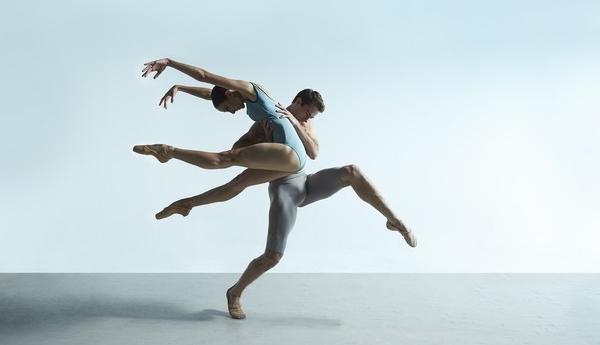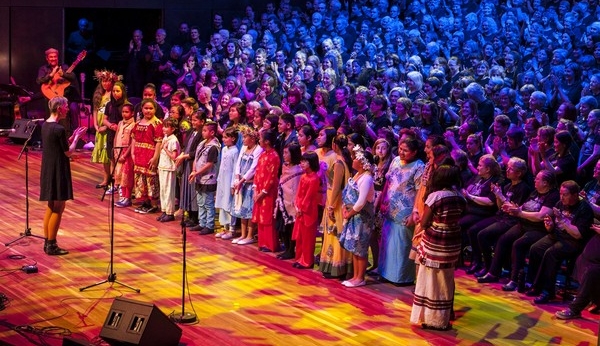In the Upper Room is in many ways closer to contemporary dance than ballet, at least for the stompers. “It involves some very interesting movements,” says Curry. “We’re dancing as close to the ground as possible – usually, as ballet dancers, we’re used to being upright, lifted high up; this is a very different way of working.”
How do dancers prepare for something so far outside their usual repertoire of movements? “The best way of preparing is just to do it, I don’t think you can prepare better in any way,” replies Curry. “This dance involves such specialised movements, so you do it over and over. Last week we were all feeling sore in our legs, in our thighs. The dance is very, very quick, but you learn it slowly, counting to music. It’s the best way to build cardio-vascular strength. There’s a lot of physical exertion with this work – I almost get anxiety about how hard it is but when you do it, it’s so rewarding.” Curry says the demands of In the Upper Room, a medley of dances focused on speed and precision partnering, create a special sense of achievement and camaderie among the performers. “The whole company comes together, we’re in it to win it together; it’s a wonderful group effort.”
“It’s such a beautiful creation,” Curry continues. “It’s non-narrative, in nine segments and starts with the dancers appearing unexpectedly from the back of the stage. It’s so ’80s, by the end of ballet our layers of clothing come off and we’re all in little red leotards and Reeboks and red bunchy socks, but it is still relevant; it’s withstood the test of time. All of the dancers are incredibly excited. It’s choreography we love doing. This is a show not to be missed!”
Part of the idiosyncratic nature of In the Upper Room comes from the fact that it wasn’t originally choreographed to the piece of music accompanying it today. How does that work? “Twyla said ‘make it fit!’” replies Curry. “And it worked so brilliantly. If you didn’t know it wasn’t originally choreographed to this piece of music you’d never think it. She used to make these outrageous requests but her dancers were up for anything.” Making a dance fit a piece of music rather than the other way round isn’t as bizarre as it might sound, as Tharp, who worked with Merce Cunningham, Martha Graham and Paul Taylor before setting up her own company, sometimes choreographed pieces with no music at all. Tharp is now in her 70s and is still creating dance. “Twyla was and is such a unique choreographer, Curry continues. “She always pushed the boundaries. Her dancers would try anything for her, they’d bend over backwards for her, so it wasn’t such an outrageous request; maybe it would be from someone else.” Another intriguing element of In the Upper Room involves cuts and breaks in the music. “Twyla paid for the music by the minute, per line” Curry explains. “Which is why it sometimes cuts out mid-sentence, in mid melody, ‘cos the money ran out!”
The Australian Ballet is enjoying the benefits of working with US dancer/choreographer Shelley Washington, who is helping to stage In the Upper Room. “We are super fortunate to have Shelley Washington here,” notes Curry. “She was one of Twyla’s dancers and was working with her even before Upper Room was created; she was integral to the creative process of this dance so she has this amazing insight, she knows about the original thought behind the steps and the movements, about where this stuff came from.”
Curry was with the American Ballet Theatre for ten years before moving to Australia six months ago. Has she noticed differences in cultures between the Australian ballet scene and that of the States? “In New York they know what they’re seeing. They have an educated palate and expect excellence all the time. People here are still figuring out if they really enjoy it or not. When The Australian Ballet went to New York they got a standing ovation and curtain calls. In the US when we finish a performance the response is like you get at a rock concert, we get that rock concert applause; here it’s different, here you think, ‘I hope the audience gets it’. You can’t quite tell. It’s tough; performers thrive on that applause and enthusiasm!”
BY LIZA DEZFOULI







